Fostering Student Agency: Empowering Curiosity in Education
- 22 March 2024


Agency, defined as the ability to take responsible action through voice, choice, and ownership, stands as a cornerstone in education. It represents a purposeful initiative towards desired ambitions, enabling students to become active participants in their own learning journey. Trust and freedom are fundamental in nurturing agency among learners.
Cultivating Trust and Freedom
In our approach to fostering student agency, trust and freedom play pivotal roles. When students trust in their abilities and are granted the freedom to express themselves, they naturally become more engaged and empowered in their learning process.
Student-Initiated Inquiry
An exemplary demonstration of nurturing student agency is through student-initiated inquiry. For instance, in exploring the phenomenon of Earth’s movement, learners embarked on a journey of questioning and experimentation:
Initial Inquiry: Students pondered over why the Earth’s movement often goes unnoticed.
Research: They delved into the concept, discovering that Earth moves at a constant speed, explaining the lack of sensation.
Experimentation: To validate their findings, students devised a simple yet ingenious experiment, simulating Earth’s motion by traveling at a consistent speed in a car.
Conclusion: Through this experiment, learners confirmed that the sensation of movement is imperceptible when traveling at a constant speed, mirroring Earth’s motion.
Encouraging Self-Designed Assessments:
Learners were empowering to design their own assessments has proven to be a transformative practice in making their thinking visible and enhancing their understanding. By providing learners with the autonomy to shape their assessments, educators have witnessed remarkable engagement and depth of learning. Here’s how self-designed assessments have been implemented and their impact.
1. Tuning into the Topic:
Utilizing visible thinking strategies such as “I see” and “I think” pictorially, learners are initially guided to explore a topic from various perspectives. This strategy helps learners to develop a deeper understanding of the topic by examining actuals and perspectives, fostering critical thinking and connections.
2. Providing Choice:
As learners delve deeper into the topic, they are given the freedom to choose how they present their understanding. By offering a variety of assessment formats, such as T charts, Venn diagrams, and graphic organizers, learners are encouraged to express their understanding in a way that resonates with them.
3. Creating Tasks:
Learners were encouraged to reflect on their learning journey, learners are tasked with creating their own assessment tasks. This process not only reinforces their understanding of the topic but also cultivates essential skills such as creativity, problem-solving, and communication.
4. Diverse Ideas and Applications:
Learners highlighted their understanding through a range of creative formats, including:
T charts: Learners were comparing various aspects of the topic.
Venn diagrams: They highlight similarities and differences.
Graphic organizers: Were organizing information in a visually appealing manner.
Self-examples: Applying the concepts to real-life situations, enhancing personal relevance.
5. Integration into Conceptual Learning:
The positive outcomes of self-designed assessments serve as a springboard for further conceptual learning across subjects. By recognizing and celebrating students’ efforts and achievements, educators reinforce the importance of autonomy, ownership, and agency in the learning process.
Conclusion
Empowering students to design their assessments fosters not only a deeper understanding of the topic but also cultivates essential skills and dispositions crucial for lifelong learning. By nurturing curiosity and agency in education, we equip students with the tools they need to navigate the complexities of the world with confidence and competence.
By,
Kalyani Talluri
Grade 2 HRT

Hyderabad, Gachibowli

Hyderabad, Bachupally

Visakhapatnam

Mohali
Bengaluru